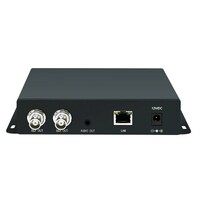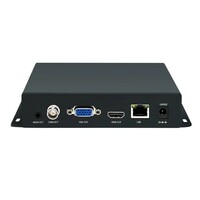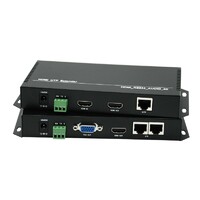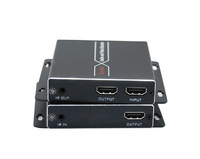Products
Product Quick Detail
- Minimum Order
- 1
- Packaging
- N/A
- Delivery
- 15 Days
Specifications
ORIVISION VIDEO ENCODER DECODER
All kind of ORIVISION'svideo decoder encoder, audio video extender, converter.
Video Encoder
ORIVISION's HEVC and H264 videoip encoder decoder enables ultra low latency end-to-end transport of secure, high-quality HD video. More custom selections of video encoder hardware, contact us.
H.265 1080P@60 HDMI Video Encoder With LCD
GO >
EH901
H.265 1080P@60 HDMI Video Encoder With LCD888
H.265 1080P@60 HDMI Video Encoder With Loop Out
GO >
EH311
H.265 1080P@60 HDMI Video Encoder With Loop Out722
H.264 4K@30 HDMI
Video Encoder
GO >
EH401
H.264 4K@30 HDMI
Video Encoder723
H.264 4 Channels 4K@30 H.264 HDMI Video Encoder
GO >
EH404
H.264 4 Channels 4K@30 H.264 HDMI Video Encoder724
H.264 8 Channels 4K@30 H.264 HDMI Video Encoder 1U
GO >
EH408
H.264 8 Channels 4K@30 H.264 HDMI Video Encoder 1U725
H.265 4K@30 HDMI Video Encoder
GO >
EH501
H.265 4K@30 HDMI Video Encoder2025
What Is The Difference Between Video Encoder And Decoder?
Video encoding and decoding are essential processes in modern video stream hardware technology. Avideo encoder hardware is a device or software that converts raw video data into a compressed format, such as H.264 or HEVC, to reduce its size for transmission or storage. It achieves this by analyzing the video content and removing redundancies or imperceptible details to reduce the amount of data that needs to be transmitted. Video encoding is typically done using specialized hardware or software.
On the other hand, a video decoder is a device or software that reverses the compression process and converts the compressed data back into its original format. It is used to playback or display a compressed video stream that has been transmitted or stored. Video decoding is also done using specialized hardware or software.
Video encoding and decoding are complementary processes that work together to enable efficient transmission and storage of video content.Video stream hardware, such as video capture cards, graphics processing units (GPUs), and dedicated encoding/decoding chips, are often used to accelerate these processes and improve performance.
Why Do We Need Video Encoding And Decoding?
Efficient transmission: Video data is typically large, and it takes a lot of bandwidth to transmit it. By compressing the video data, video encoding reduces its size, making it easier and more efficient to transmit over networks.
Storage: Compressed video data takes up less space than raw video data, making it more practical to store large amounts of video content.
Compatibility: Different devices and applications may require different video formats. Video encoding and decoding ensure that the video content can be played back on a wide range of devices and platforms.
Quality: Video encoding and decoding can also be used to improve the quality of the video content. For example, encoding can be used to remove noise or artifacts, while decoding can be used to enhance details and colors.
Video stream hardware, such as video capture cards, GPUs, and dedicated encoding/decoding chips, can significantly improve the speed and efficiency of these processes, making it possible to transmit, store, and playback high-quality video content in real-time.
- Country: China (Mainland)
- Business Type:
- Market:
- Founded Year:2004
- Address:2 Floor,Building F, No.86 East Waihuan Road, Chongchuan District, Nantong, Jiangsu, China
- Contact:orivisiontech com
Other products from Nantong ZYDZ Electronic Co., Ltd.
Relate products of Products
Jayuanev charging accessories Jayuanelectric vehicle charging solutions Portable, Mobile EV Charging Box; Safe, fast, easy EV Charging Station; SAE, IEC, GBT type EV Charging Cable (With advanced TPU cable material) and their additions like Adapter, Socket, Electronic Lock. ...
Introducing the SANY SY220C-9, a 21.9-ton hydraulic medium-size excavator engineered to deliver unparalleled productivity and fuel efficiency. Designed with a rigid structure and reliable hydraulic components, this excavator ensures durability and reliability in even the most ...
Our biomass pellet production lineefficiently transforms organic waste into high-quality pellets for sustainable energy use. Featuring advanced machinery, it ensures precise grinding, drying, pelletizing, and cooling processes to optimize pellet density and durability. Designed ...














